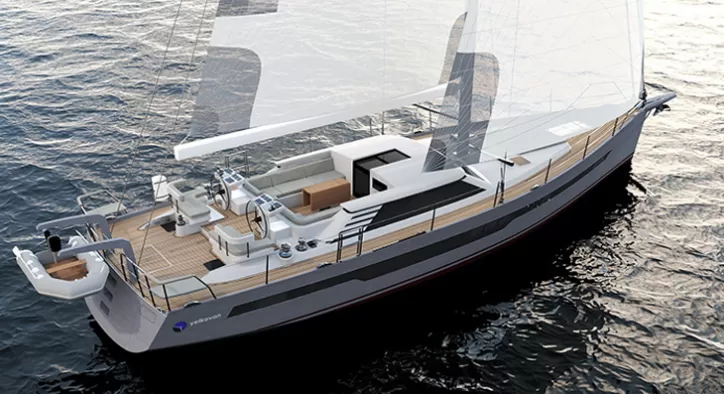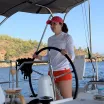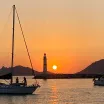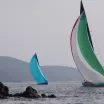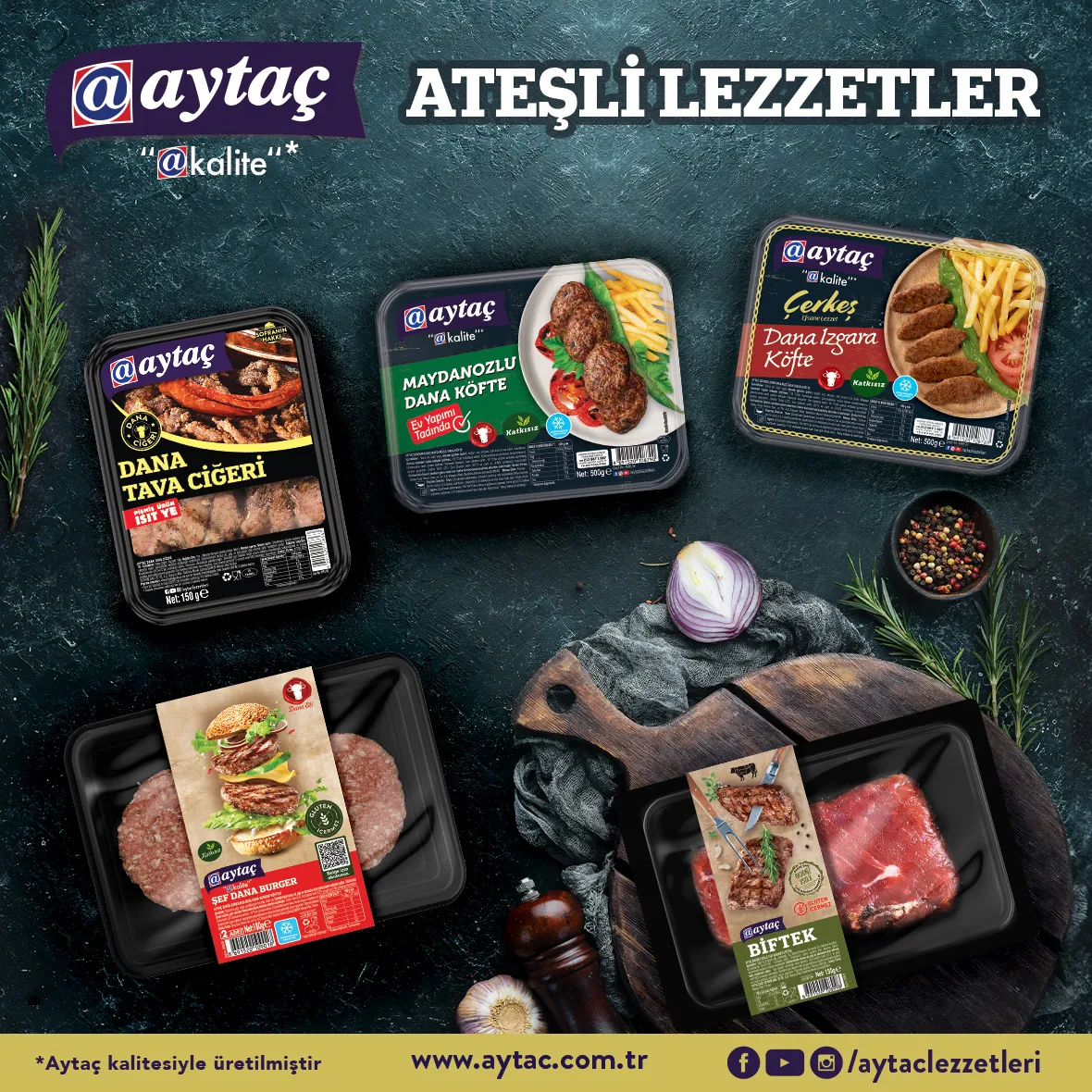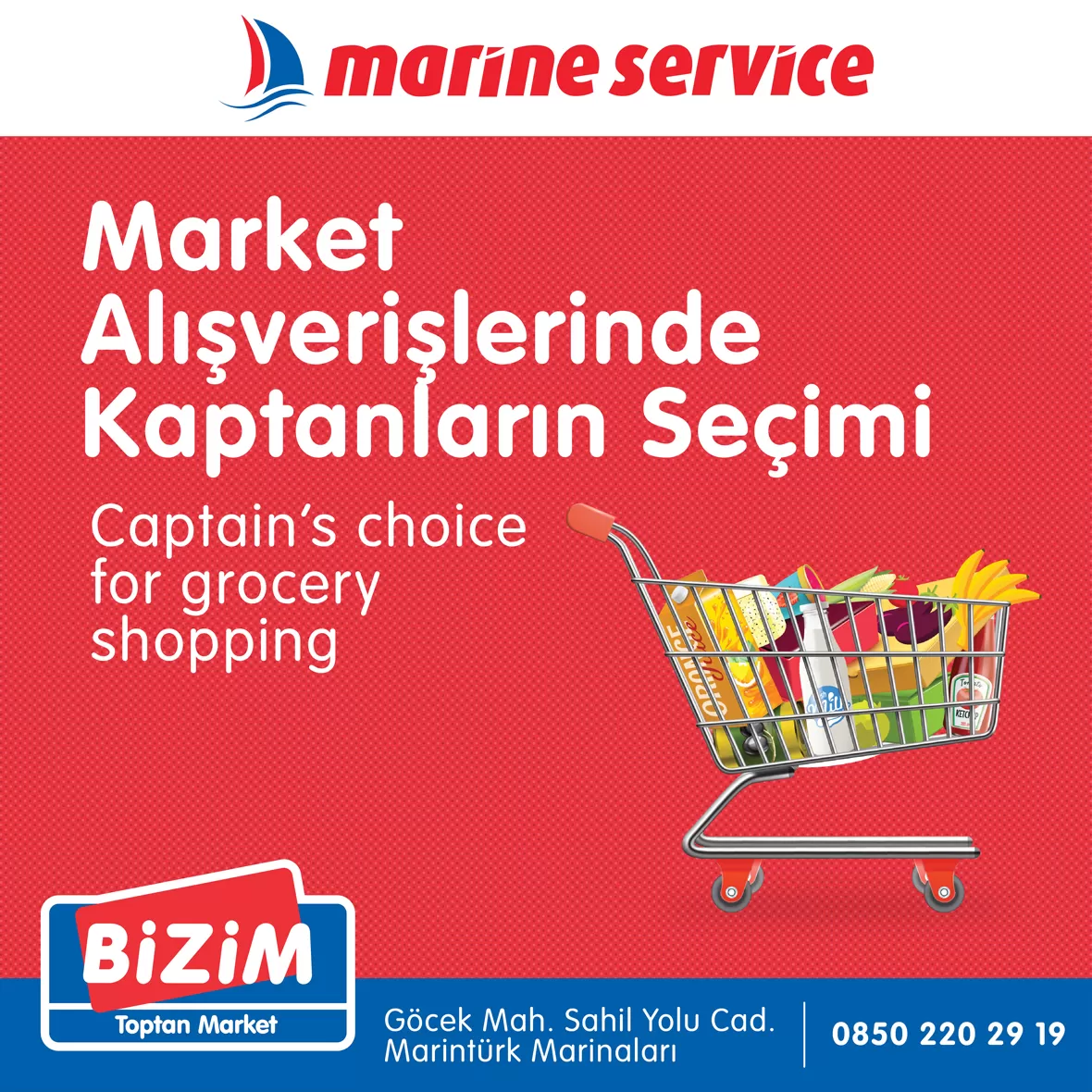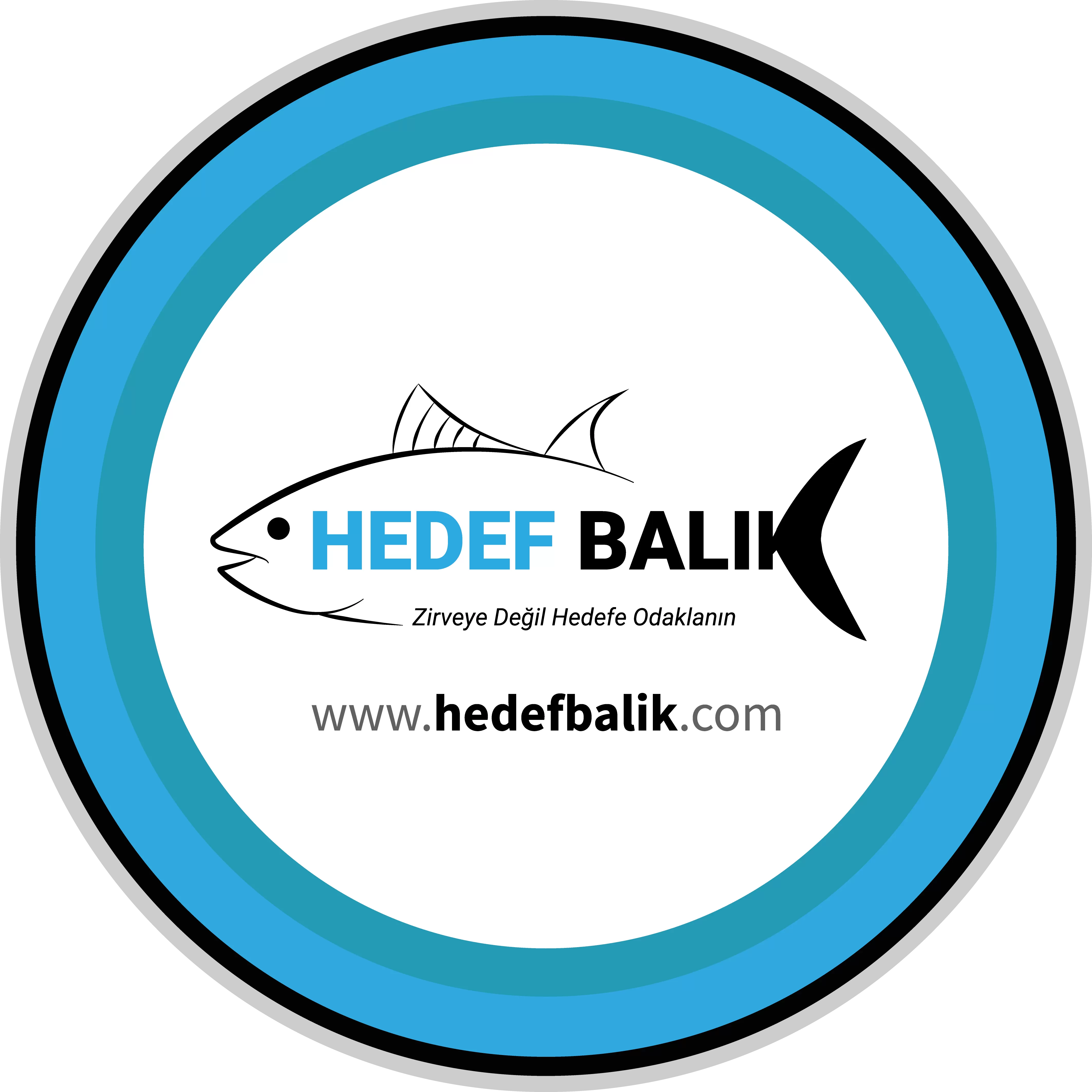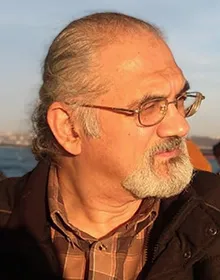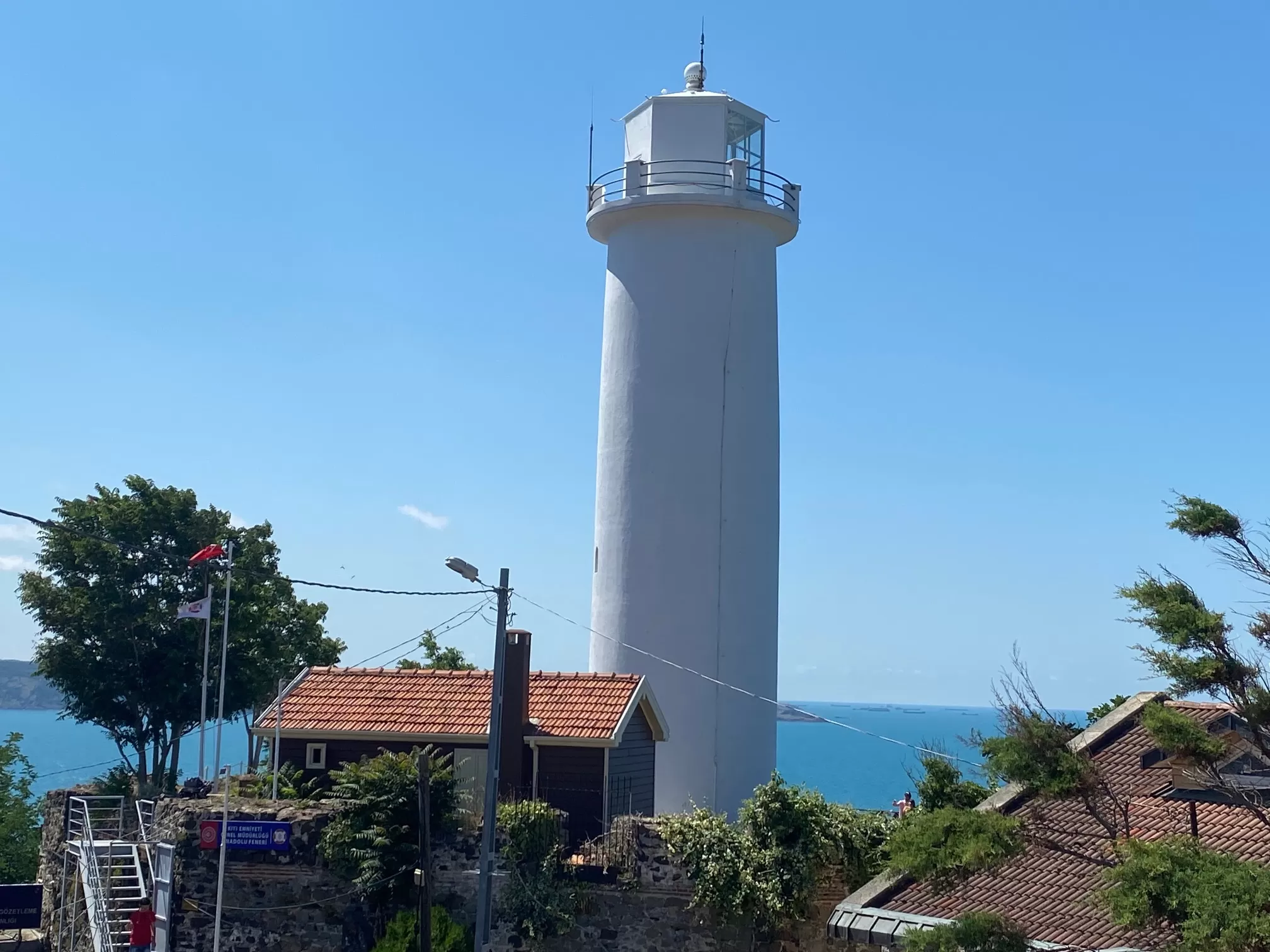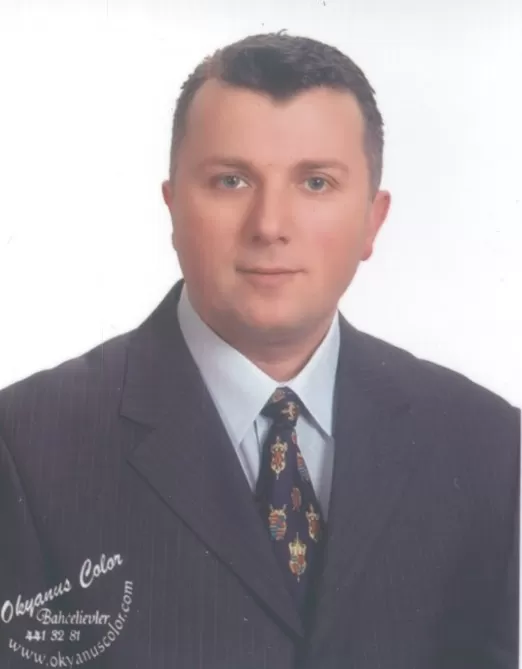Could you briefly introduce yourselves?
In 2021, Ali and I embarked on this journey to manufacture metal sailboats that could take you wherever you dream of. My wife Özlem IŞIN and I have a long-standing industrial background and an internationally recognized business that won the Grand Prize in the 2012 Technology Awards Competition. Ali, on the other hand, has lived by the sea since childhood, possesses professional-level sailing experience, and is an engineer with a deep passion for the ocean. Yelkovan Yachts emerged as a result of Ali’s passion for the sea and our industrial expertise.
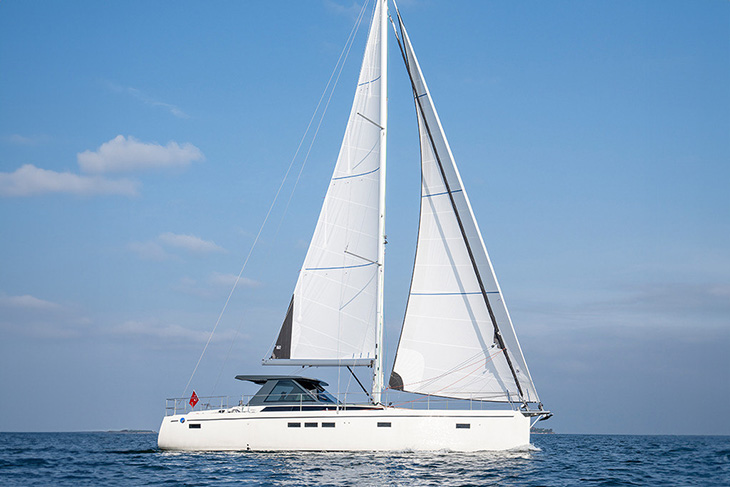
Yelkovan Yachts stands out with its production of metal-hulled sailing yachts. Could you tell us about the process of yacht manufacturing?
As a shipyard that produces semi-custom yachts, we have three hulls: 50, 56 and 60 feet.
First, we meet with our clients to understand their dream yacht and determine their needs. At this stage, our clients have options on many aspects, from the woods used inside the yacht to the sailing rig, from the number of rooms and toilets to the fabrics. It’s more accurate to think of these options as a yacht co-designed according to needs rather than a list of options from a series production shipyard.
We finalize the yacht’s deck and interior layout, rigging, and equipment features together. Depending on the need, we detail the design on one of our existing hulls and prepare manufacturing projects by modeling the entire yacht on a computer before production.
After the design, production begins with the manufacturing of the steel or aluminum hull, which takes about 6-8 months. Simultaneously, we start manufacturing the yacht's furniture in-house. Once the hull is completed, we apply paint according to the material used and then implement the electrical and mechanical installation and insulation projects.
Following the insulation, the furniture is installed, and all systems are brought together. By this stage, around the 10th month, the production is completed after the final details are finished, and the systems are tested.
We then launch the yachts into the water, conduct sailing tests after rigging, and complete the production.
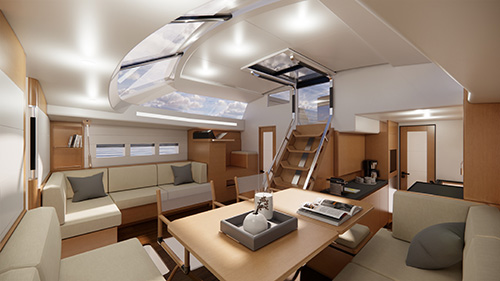
What are the advantages and disadvantages of steel and aluminum materials compared to other materials?
Steel stands out as a material that has been used in maritime for many years due to its strength, stability due to its weight, and ease of processing anywhere in the world.
Aluminum, on the other hand, is the material with the highest resistance to the harmful effects of seawater compared to all other materials used in yacht manufacturing. Therefore, if you have an aluminum yacht, there is no need even to paint the hull. It stands out with its strength, low maintenance requirements, and high impact resistance relative to its weight.
Of course, like any material, with proper care, both aluminum and steel are the most durable materials for yacht manufacturing, and thus retain their value for the longest time.
What technologies and innovations do you use in yacht production?
We handle everything from draft design to 3D modeling, from analysis to production planning and management, using modern engineering software, providing detailed traceability. This minimizes unexpected errors and ensures highly efficient process management.
This also allows us to provide detailed information to users, enhancing their technical mastery of the yacht, while also enabling us to provide qualified technical support for our yachts anywhere in the world.
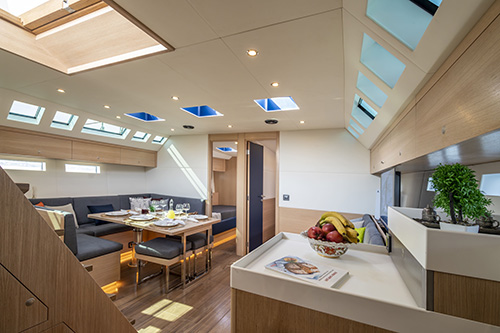
What features does the Yelkovan’56 have in its interior and exterior equipment? What are its safety standards?
The Yelkovan’56 is a yacht equipped for oceanic crossings, certified as CE Category A. However, it has equipment and safety standards far beyond existing ISO standards. Instead of detailing all the equipment, we’d like to mention our basic principles.
In the Yelkovan 56, centralization, redundancy, and protected sailing are three important concepts we focus on.
Centralization: In the Yelkovan56, all equipment can be accessed from a single location, a specially designed and isolated engine room. This results in a quiet yacht that is easy to maintain. Additionally, all electrical control is centralized at the navigation table, which we refer to as the brain of the yacht, making tasks like diagnosing electrical problems or accessing fuses simpler.
Redundancy: Systems are designed to work flawlessly, but they will inevitably fail one day in the marine environment. That’s why every vital system in the Yelkovan56 has a backup. Everything controlled electronically also has a manual alternative.
Protected Sailing: In the Yelkovan56, you can sail in any weather without leaving your protected cockpit, which is enclosed by a hardtop. All ropes lead to the cockpit, allowing you to control all sails by yourself.
What measures do you take to reduce environmental impact in metal yacht production? What are your sustainability projects and goals?
The metals we use are inherently recyclable materials. In fact, to provide a statistic, 40% of the steel and 66% of the aluminum currently in use globally come from recycling. Therefore, metal yachts have a significant advantage in terms of environmental friendliness.
Although resins are not used, we have a closely monitored waste process for adhesives and paints. We send all excess metal materials to recycling.
As Yelkovan Yachts, we offer hybrid and electric options in our aluminum Yelkovan 50 and Yelkovan 60 models.
What are your thoughts on the competition in the metal sailing yacht market? What are the biggest challenges and opportunities in the industry?
With the increasing number of people aiming to live on yachts and travel to remote places independently, the need and demand for metal yachts are steadily rising. Especially with the growing awareness of sustainability and the desire to own marine vessels that can last for generations, the popularity of metal yachts is increasing.
The rise in climate-change-related sudden weather changes and events like orca attacks is also increasing the demand for safe yachts. Feeling safe at home is a natural need, and without a doubt, metal yachts, which stand out for their strength, are the ideal choice to meet this demand.
As for challenges, the main difficulty lies in the much more complex manufacturing process of metal-hulled yachts compared to mass-produced composite-hulled yachts. Additionally, in this manufacturing process, which encompasses many areas of expertise, the difficulty in accessing skilled labor limits the increase in production capacity.
What innovations and projects do you plan to implement in the future? What are your company's growth targets?
We are working towards becoming a global brand recognized for our metal-hulled yachts, which can take sailors to wherever they dream of without compromising on safety and comfort.
Thank you for taking the time to speak with us amidst your busy schedule.
Banu Demir / Sailor's Newspaper
Prepared for Publication: Doruk Agency / Founded by Sailor's Newspaper

